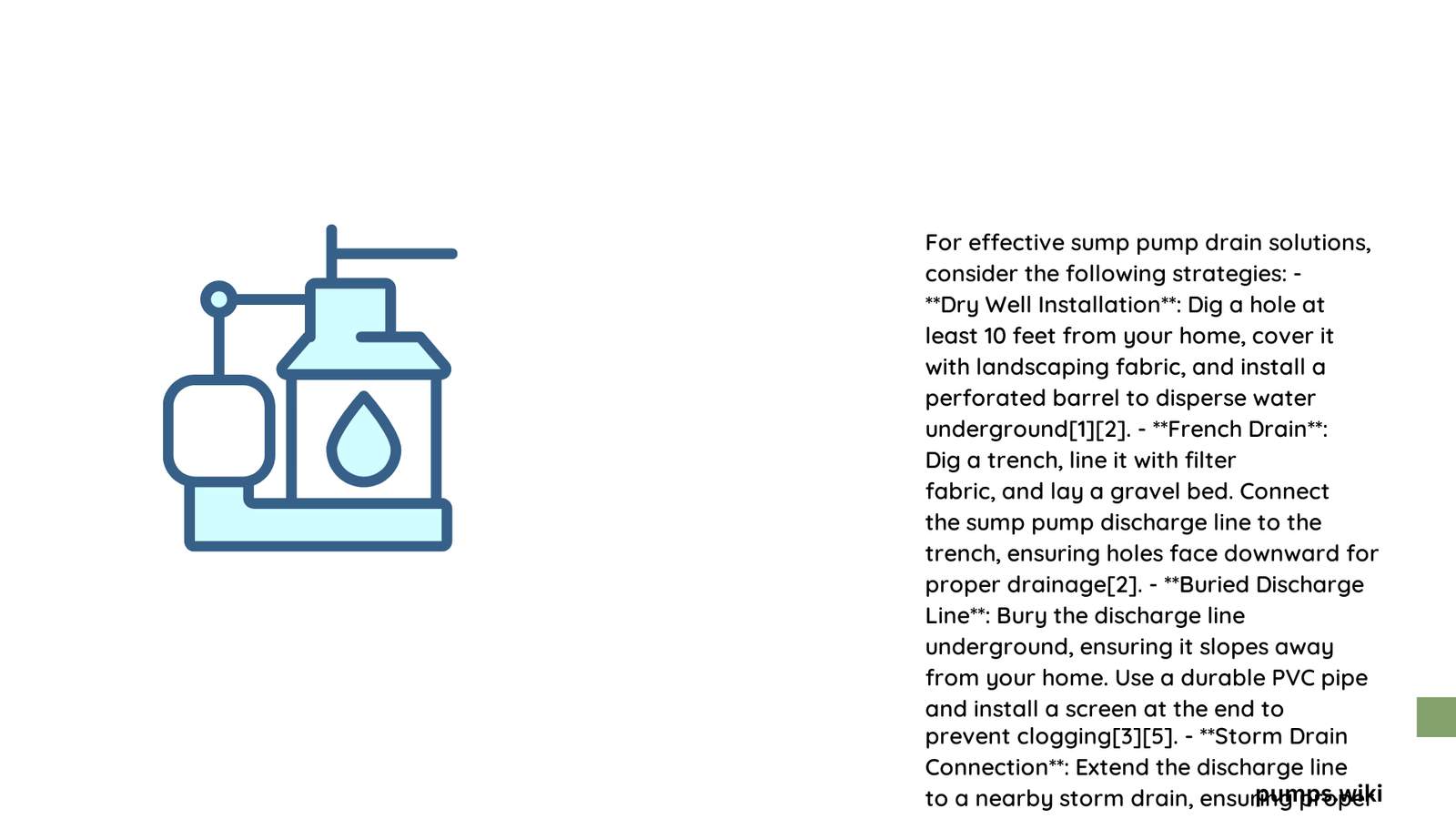Water management is critical for protecting your home’s foundation, and sump pump drain solutions offer a comprehensive approach to preventing basement flooding and moisture-related damage. Homeowners face significant risks from water infiltration, including structural damage, mold growth, and property loss. This guide provides expert insights into implementing robust drainage strategies that safeguard your property effectively.
What Are the Most Effective Sump Pump Drain Solutions?
Understanding Water Management Fundamentals
Sump pump drain solutions encompass a multi-layered approach to water management that involves strategic drainage systems, proper installation techniques, and ongoing maintenance. The primary goal is to redirect water away from your home’s foundation, preventing potential structural damage and moisture-related issues.
Key Components of Drainage Systems
Perimeter Drainage Strategies
- French Drain Installation
- Excavate a shallow trench around the home’s foundation
- Install perforated pipes with gravel backfill
- Ensure proper slope for water redirection
Discharge Mechanism Options
| Discharge Method | Pros | Cons |
|---|---|---|
| Grassy Areas | Low cost | Limited effectiveness in flat terrain |
| Storm Drains | Municipal infrastructure | Potential permitting requirements |
| Underground Drainage | Aesthetic | Higher installation complexity |
How Do You Select the Right Sump Pump?
Pump Capacity Considerations
- Basement Size
- Measure total square footage
- Calculate potential water volume
-
Choose pump with appropriate horsepower
-
Water Table Characteristics
- Assess local groundwater conditions
- Consider seasonal precipitation patterns
- Select pump with matching discharge capacity
What Installation Techniques Ensure Optimal Performance?
Critical Installation Steps
- Proper Sump Pit Placement
- Locate at lowest basement point
- Ensure adequate depth
-
Install with appropriate gravel base
-
Discharge Line Configuration
- Minimum 10-foot distance from foundation
- Use check valve to prevent backflow
- Implement freeze protection in cold climates
How Can You Maintain Your Drainage System?
Maintenance Checklist
- Monthly Inspection
- Test pump functionality
- Check electrical connections
-
Verify discharge line clearance
-
Annual Professional Assessment
- Comprehensive system evaluation
- Clean drainage pipes
- Assess potential wear and tear
Advanced Drainage Solutions
Technological Enhancements
- Smart Monitoring Systems
- Real-time water level tracking
- Automated alerts
-
Remote management capabilities
-
Backup Power Solutions
- Battery-powered backup pumps
- Water-powered emergency systems
- Uninterrupted protection during power outages
Cost and Investment Considerations
Budget Planning
- Initial Installation: $500 – $4,000
- Annual Maintenance: $100 – $300
- Long-term Property Protection: Priceless
Expert Recommendations
- Prioritize professional assessment
- Choose quality equipment
- Implement preventative maintenance
- Stay proactive about water management
Technical Specifications to Consider
- Pump Capacity: 1/3 to 1 HP
- Discharge Rate: 30-50 gallons per minute
- Vertical Lift: 10-25 feet
- Power Requirements: 110V standard circuit
Potential Challenges and Solutions
Common Issues
- Freezing Discharge Lines
- Use insulated pipes
- Implement heat tape
-
Create proper slope
-
Sediment Accumulation
- Install filter systems
- Regular cleaning
- Use high-quality gravel backfill
Final Thoughts on Sump Pump Drain Solutions
Effective water management requires a comprehensive approach combining strategic drainage, quality equipment, and consistent maintenance. By understanding these principles, homeowners can protect their property from potential water-related damage.

